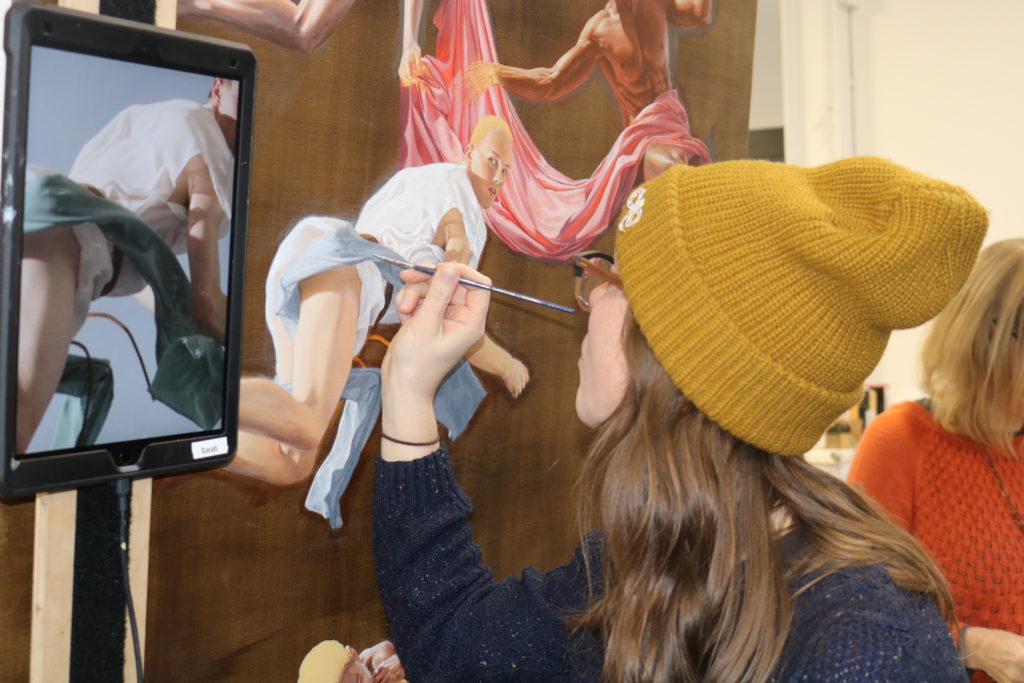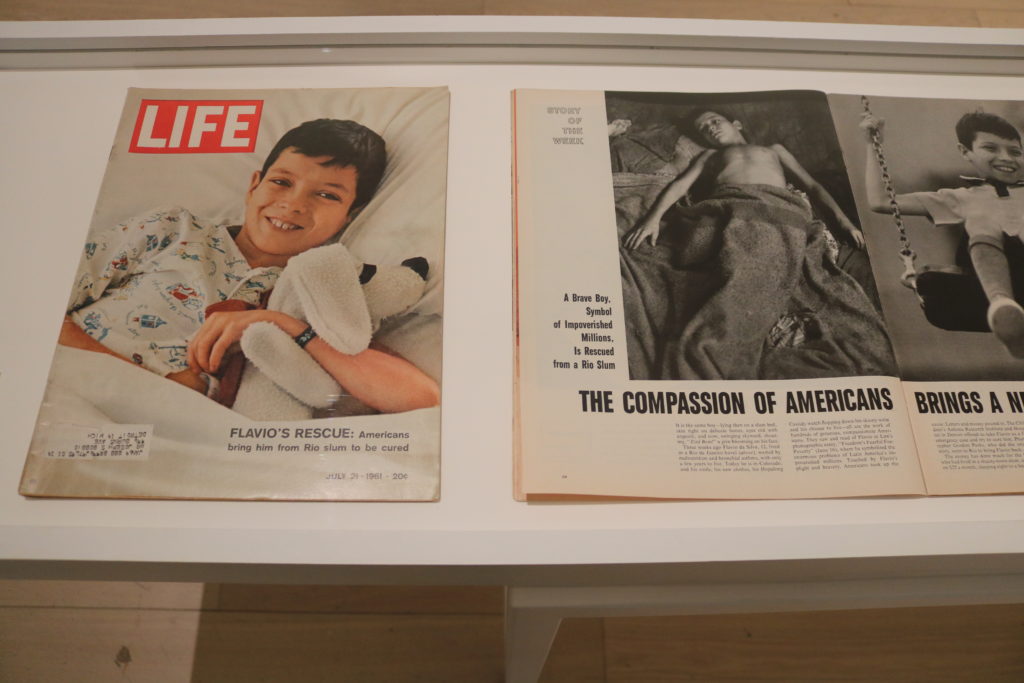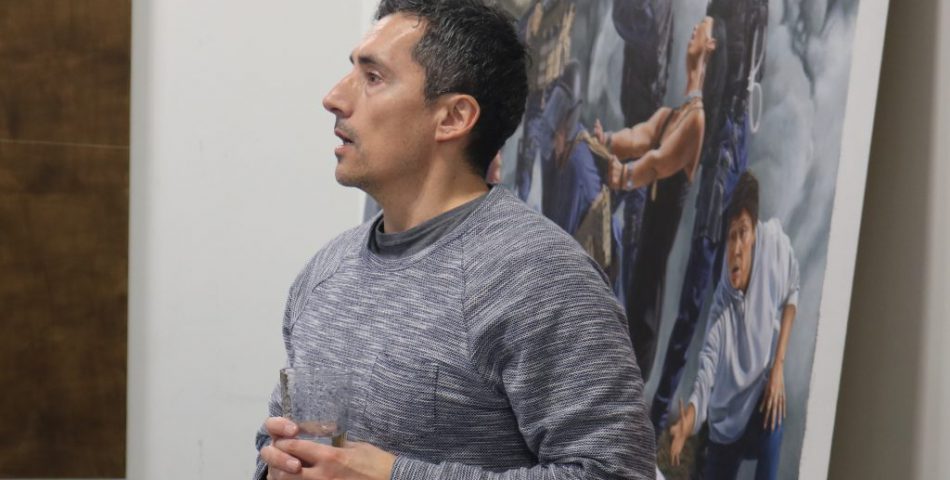Members meet Kent Monkman and Mickalene Thomas, tour Gordon Parks exhibit and see a private collection.
At the end of November Partners in Art members had an amazing opportunity to learn more directly from curator Julie Crooks and from artist Mickalene Thomas, whose show Femmes Noires is being supported by PIA at the AGO. Thomas puts black women at the centre of her practice which celebrates the complexity and diversity of black female identities while tackling the issues of inequality and representation, all filtered through a queer feminist lens. Thomas writes: “To do the work that I do, I am asking and looking to my sisters of the world.” Mickalene Thomas: Femmes Noires is at the AGO until March 24, 2019. Learn more about the show from Canadian Art.
In early December members went to northwest Toronto to visit artist Kent Monkman at his new studio. Based on a classic painting atelier, Monkman currently employs 12 assistants. By having their eyes on his work Monkman has found, “both the quality and quantity” of his pieces have grown. PIA has been a fan of Monkman’s for some time, having commissioned a performance piece in 2007. Read his Q + A to learn more about his practice.


Members were also treated to a vivid journey by Paul Roth, the director of the Ryerson Image Centre, as part of the exhibition Gordon Parks: The Flávio Story. The show explores the chain of events that followed Gordon Parks and his 1961 photo essay from his visit to a favela in Rio, which was remarkable and life-altering for many.

Members also had the privilege of touring The Richard Ivey Collection at the end of November. Imbued with a wonderful sense of eclecticism, the philanthropist’s philosophy is simple: Ivey told members he chooses artwork that he “likes”. Subjects range from political themes and memories to mood works and humour, many of which feature interesting techniques, or tricks-of-the-eye.
PIA hosts education events for members to expand their understanding of contemporary visual arts. Have an education idea for PIA? Contact the Education Committee.
